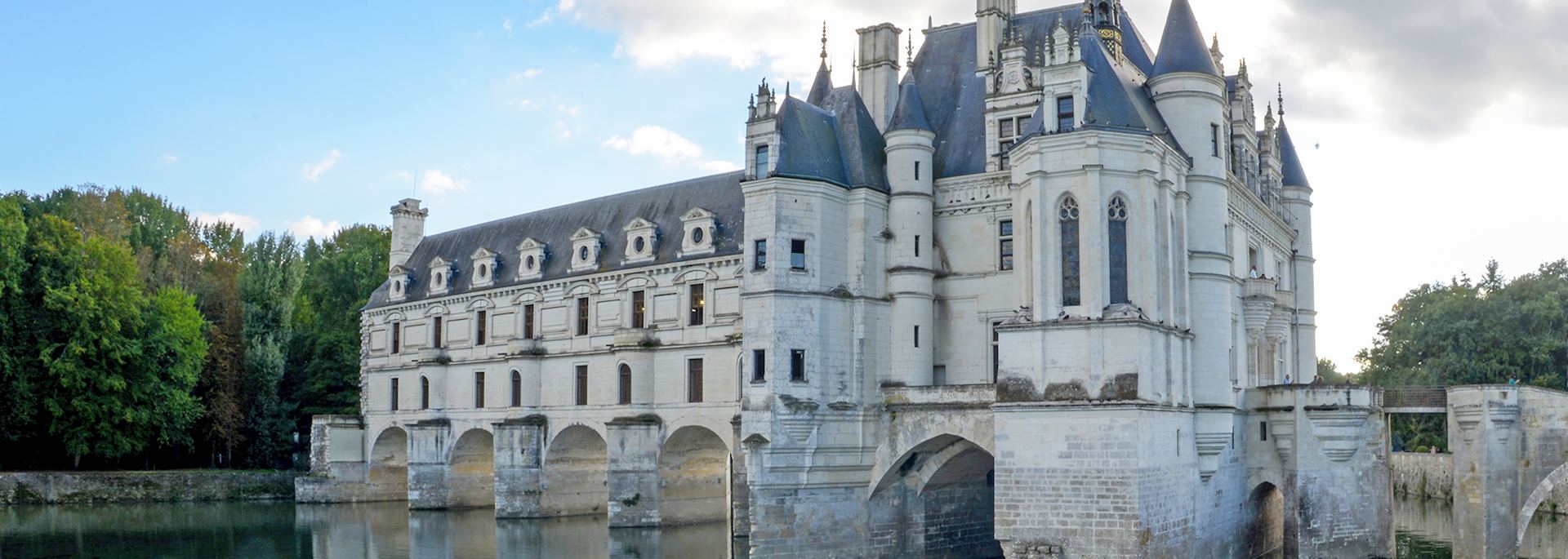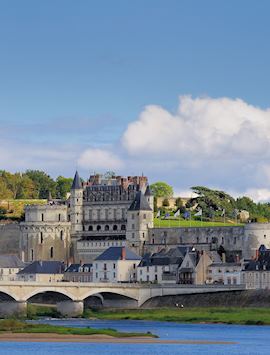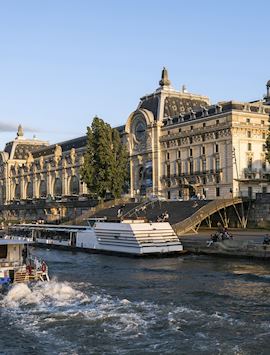Jump to:
Approached via a long avenue of tall trees, the Château de Chenonceau is a fairy-tale castle widely regarded as one of the finest palaces in the Loire Valley.
No expense was spared in creating a home so elaborate and harmonious that it has been a source of envy, pride and astonishment ever since. The château is set over the slow-moving Cher River on a graceful arched bridge that's reflected in the languid water.
France specialist LeanneSo many strong women have left their stamp of this chateau that, for me, a tour feels a little like getting to meet them. The art, tapestries and gardens are astounding, but I always make time to visit the Black Bedroom.
The château's history
Construction began on the château in 1515 at the behest of Thomas Bohier, chamberlain to King Charles VIII. All but the keep of the previous castle on the site was demolished, and the new château was begun in elaborate style.
Bohier's wife, Katherine Briçonnet, played a large part in the plans and enjoyed hosting the French nobility there. Most of what you see today dates from the late Gothic and early Renaissance periods, with the interior furnished with original antiques, tapestries and tiled floors.
The interior
One of the most impressive rooms is the ground-floor François I room, which features priceless artworks by Tintoretto, Correggio, Rubens and Van Dyck, among others.
In contrast, the bedroom of Louise de Lorraine, widow of Henri III, features a black ceiling decorated with teardrops and the couple's intertwined initials.
The vaulted kitchens reveal much about the sheer scale and logistics of catering for the massive groups of courtiers and party-goers that regularly filled the château.
The arched bridge
The arches across the Cher that are now so symbolic of the château were added in 1555 by the mistress of King Henri II, Diane de Poitiers, supposedly so she could go hunting on the opposite bank of the river. She also added the formal gardens at this time.
When Henri II died in 1559, his vengeful wife, Catherine de Médicis, forced his mistress to exchange the château for the less elaborate Château de Chaumont-sur-Loire. Queen Catherine went on to embellish her newly acquired palace further and added the gallery above Diane's bridge in 1577.
The Grand Gallery
The château's most flamboyant parties were held in the Grand Gallery, which sits over the river, and Queen Catherine was renowned for the wild events she hosted there. By the 18th century and under the auspices of French aristocrat Madame Dupin, Chenonceau hosted the cream of European society, when Enlightenment philosophers Voltaire and Rousseau were among the visitors.
Later, during World War I, the gallery was used as a military hospital. During World War II, when German-occupied France lay just beyond the river, it acted as an escape route for fleeing members of the French Resistance.
An exhibition on the gallery's upper level explains the château's history and the role the women who lived here played in its design and destiny.
who's been there

Start planning your tailor-made trip to Ch√¢teau de Chenonceau by contacting one of our France specialists
- 617-223-4762
- Make an inquiry
Suggested itineraries featuring Ch√¢teau de Chenonceau
Our itineraries will give you suggestions for what is possible when you travel in Ch√¢teau de Chenonceau, and they showcase routes we know work particularly well. Treat them as inspiration, because your trip will be created uniquely by one of our specialists.
Places near Ch√¢teau de Chenonceau
- Amboise 12 kilometers away
- Ch√¢teau de Chaumont-sur-Loire 20 kilometers away
- The Loire Valley 26 kilometers away
- Ch√¢teau de Cheverny 36 kilometers away
- Ch√¢teau de Villandry 43 kilometers away
- Ch√¢teau d'Azay-le-Rideau 47 kilometers away
- Ch√¢teau de Chambord 47 kilometers away
- Chinon 66 kilometers away
- Normandy 186 kilometers away
- Paris 196 kilometers away
- Rouen 236 kilometers away
- Honfleur 242 kilometers away
- Mont Saint-Michel 242 kilometers away
- Bayeux 254 kilometers away
- Dordogne 258 kilometers away
- ≥ß≤π∞˘±Ù≤π≥Ÿ-±Ù≤π-∞‰≤π≤‘√©ªÂ≤π 272 kilometers away
- Beynac-et-Cazenac 277 kilometers away
- La Roque-Gageac 279 kilometers away
- Castelnaud-la-Chapelle 280 kilometers away
- ≥ß≤πæ±≤‘≥Ÿ-√â≥ææ±±Ùæ±¥«≤‘ 288 kilometers away
- Bordeaux 305 kilometers away
- Reims 307 kilometers away
- Lyon 337 kilometers away
- Arras 353 kilometers away
- Lille 396 kilometers away
- ∏È≥Û√¥≤‘±-¥°±Ù±Ë±≤ı 414 kilometers away
- Annecy 417 kilometers away
- Talloires 427 kilometers away
- ±´≥˙√®≤ı 452 kilometers away
- Orange 459 kilometers away
- Pont-du-Gard 463 kilometers away
- Ch√¢teauneuf-du-Pape wine region 467 kilometers away
- Alsace 473 kilometers away
- Chamonix 474 kilometers away
- Avignon 475 kilometers away
- Biarritz 476 kilometers away
- Colmar 479 kilometers away


